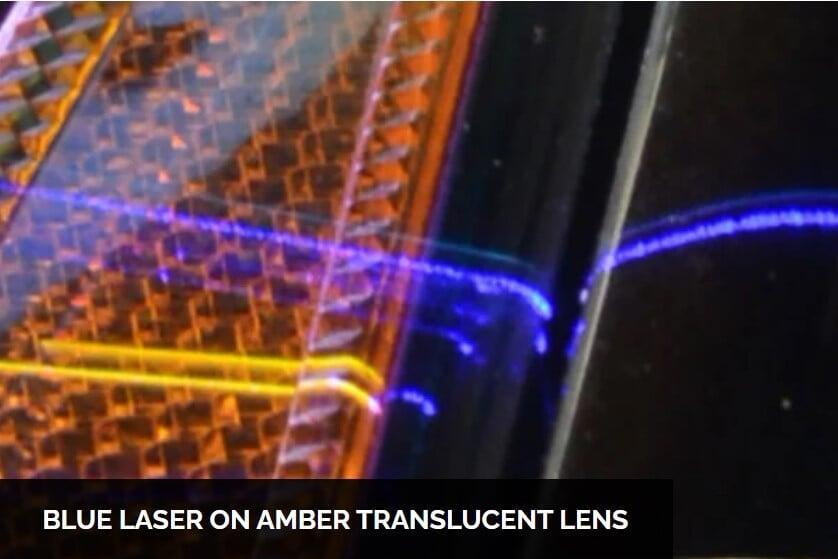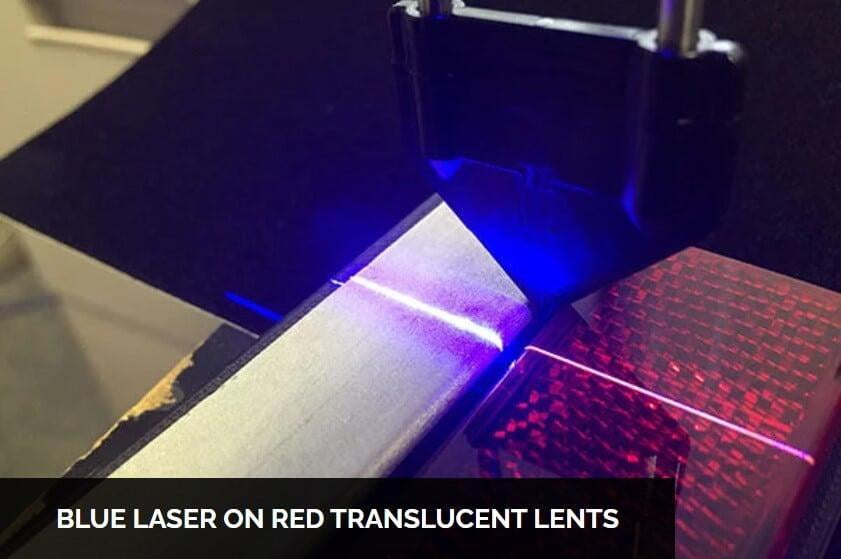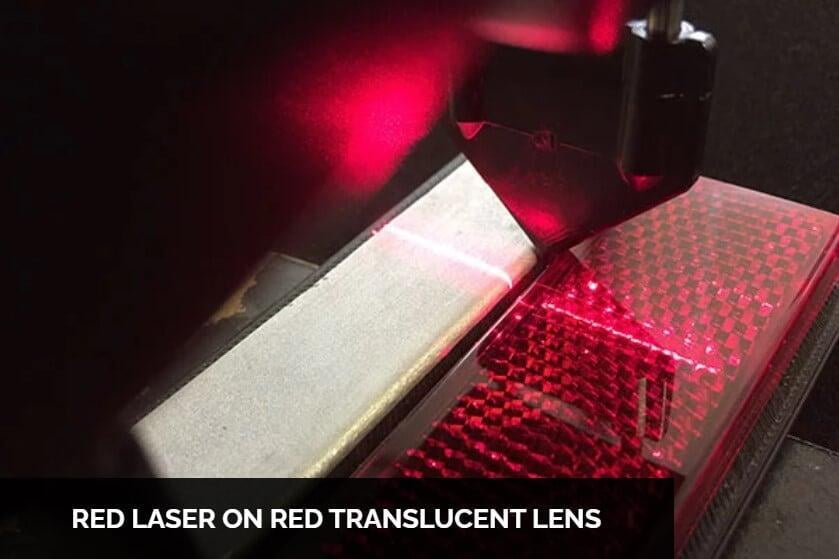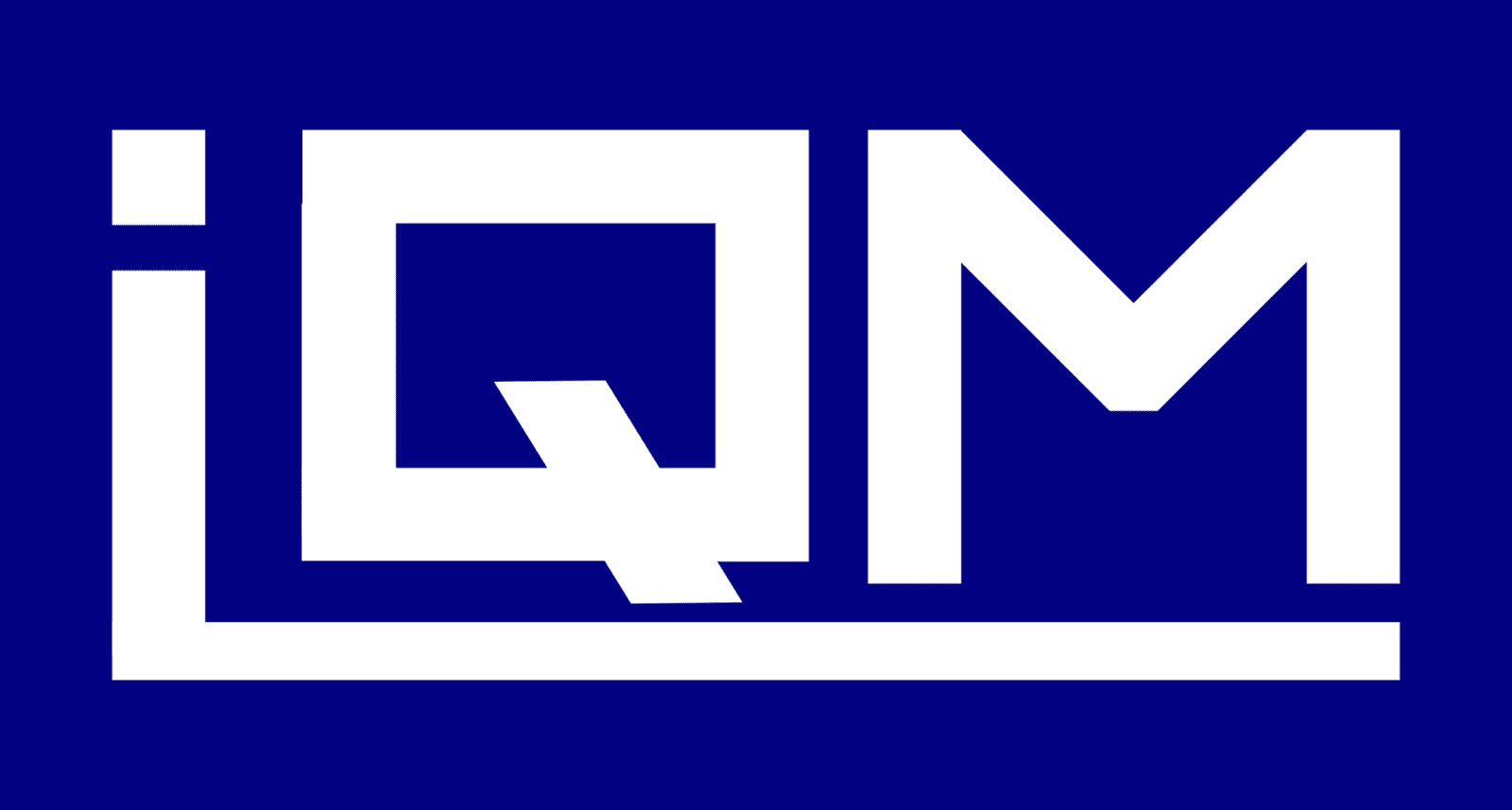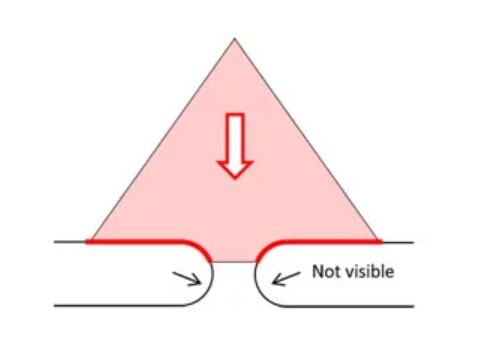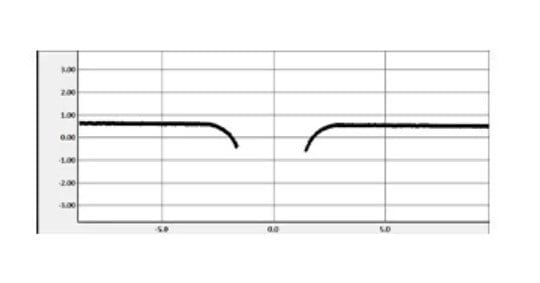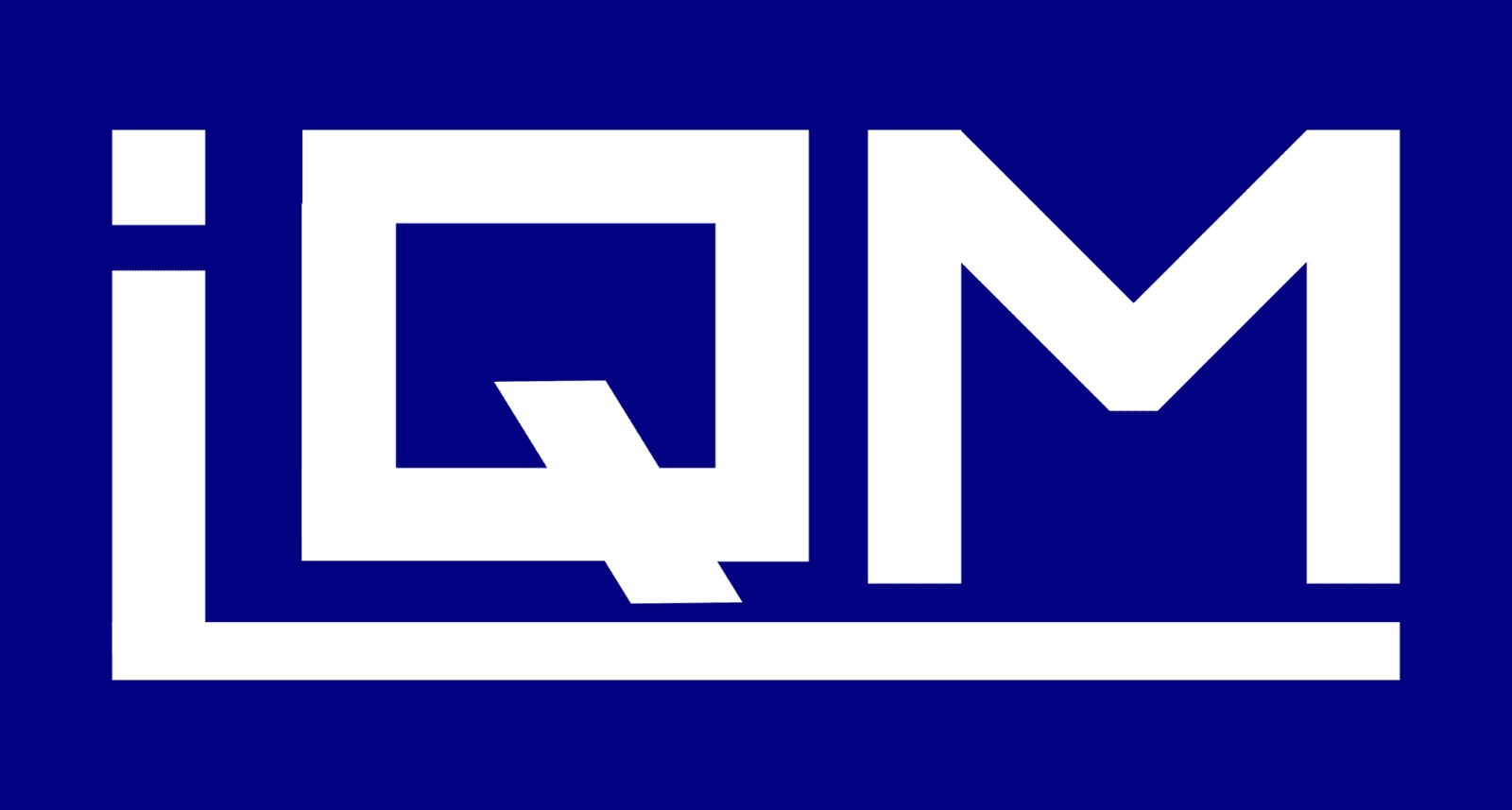How LaserGauge Works
How LaserGauge Works
How LaserGauge acquires a 2-D Surface Contour through Laser Triangulation
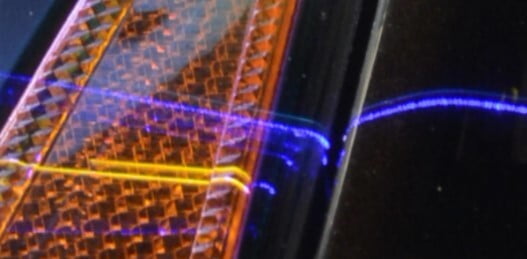
The LaserGauge® acquires a 2-D contour of the surface to be measured, much like a linear “point cloud”, such that all of the points line up in the same measurement plane. In a typical LaserGauge®, up to 1280 points in a contour can be acquired. Since these contours are taken at a fixed scan width, the point spacing in the contour is dependent upon the scan width and the number of sample points. For example, for a 1-inch scan width with 500 points per scan, the sample spacing of the contour is 0.002” (50 μm). Typical depth resolution is 0.001” (25 μm) for a 1” (25 mm) scan but can be as small as 0.0002” (5 μm) for smaller scan widths.
Scanning Methods available with the LaserGauge DSP Sensors
Scanning Methods available with the LaserGauge DSP Sensors
LaserGauge is not limited to the single laser stripe technology. Other structured light methods are utilized to allow for measurements on different types of components, each with its own advantages.
Single Stripe Scanning
Several LaserGauge® sensors use single-line imaging for surface contour measurement. While not able to provide 3D information of a surface, it is the most compact, fastest, and most multi-purpose of the laser imaging models.
Cross-Vector Scanning
Cross-Vector sensors utilize lasers angled toward the inside edges of the gap, crossing in the middle. This allows the sensor to see around edges of the radius to the vertical tangent and beyond. The result is a complete surface profile and the most accurate gap measurements.
SCANNING DIAGRAMS
Cross-Vector Scanning
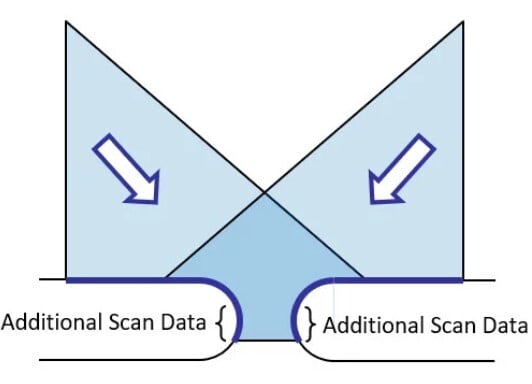
Cross-Vector Scanning
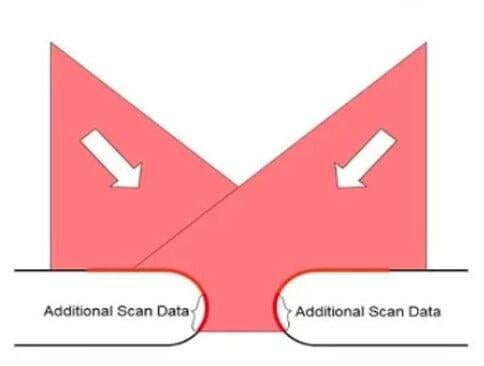
ADVANTAGES:
ADVANTAGES:
- Multiple lasers/views
- Able to see around edges
- No movement necessary
Available Sensors
Available Sensors
Understanding LaserGauge Red and Blue Laser Technology
Selection of Red vs Blue laser technology comes down to a question of the surface material being measured. Red Laser technology is used on solid surfaces, such as painted or unpainted, non-shiny surfaces. Blue laser technology works accurately on all kinds of surfaces including painted, unpainted, translucent, transparent, some plastic, composite, and shiny.
